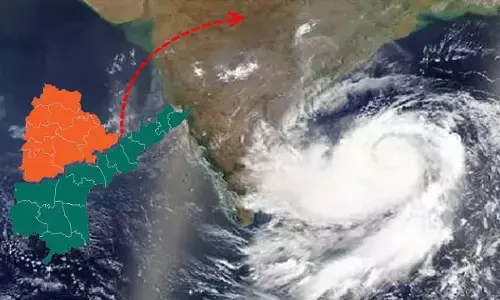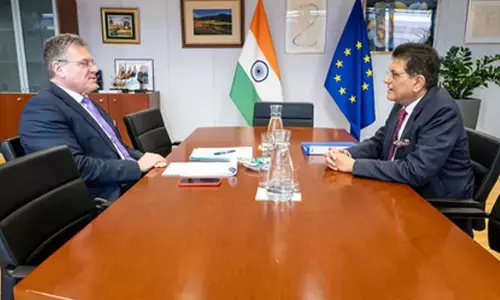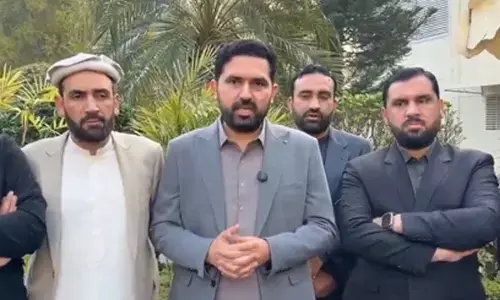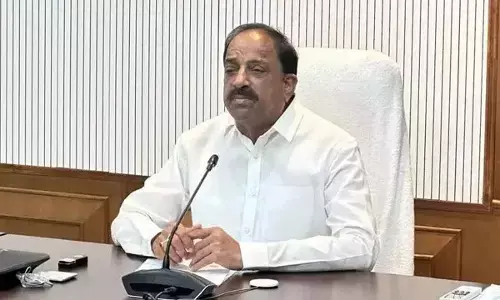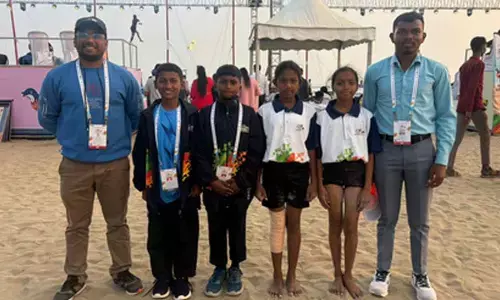Let’s come together to prevent drug abuse
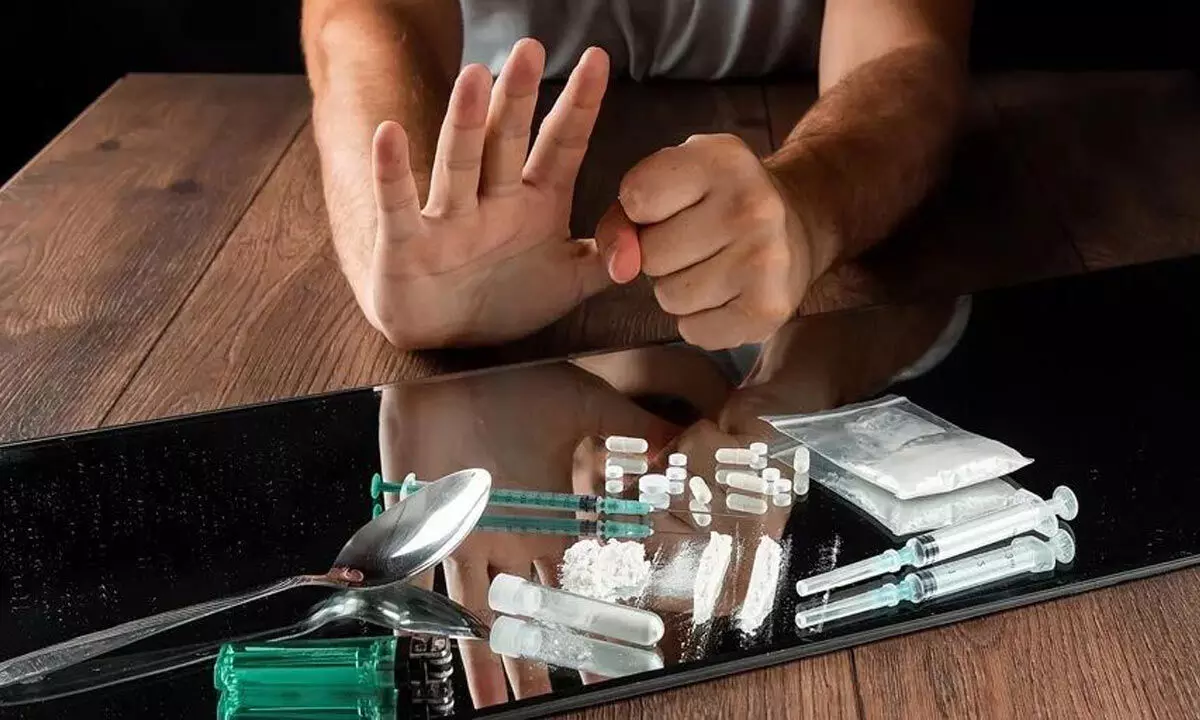
Let’s come together to prevent drug abuse
The problem of drug abuse has assumed a critical proportion globally.
The problem of drug abuse has assumed a critical proportion globally. This year’s World Drug Day (June 26) is appropriately themed on ‘People First: Stop Stigma and Discrimination, Strengthen Prevention.’ It is a grim reality that the victims of drug abuse suffer from familial and social isolation and repudiation. It causes a lot of mental and physical distress and trauma to them. They are also deprived of accessing the help they need. It makes their life and that of their families miserable and much tougher. Hence, there is a need for a people-centered approach to drug policies, which are focussed on human rights and compassion! Helping the victims of drug abuse with a social and emotional salve and at the same time putting an effective check on the growing tentacles of drug and illicit trafficking is indeed a gargantuan task but not an impossible proposition. It requires collective efforts and a wholesome approach to achieve the goal of freeing our country from drug abuse.
This year’s World Drug Day is a call to “raise awareness about the negative impact of stigma and discrimination on people who use drugs and their families; raise awareness about the AIDS and hepatitis epidemics among people who use drugs and expand and strengthen HIV and hepatitis prevention programmes; promote evidence-based, voluntary services for all people who use drugs; educate about drug use disorders, available treatments and the importance of early intervention and support; advocate for alternatives to imprisonment for drug-related crimes such as community-based treatment and services; combat stigma and discrimination by promoting language and attitudes that are respectful and non-judgmental, and empower young people and communities to prevent drug use and addiction.”
Quite often we read and hear about the children of well-off, elite and middle-class families being caught for consuming banned substances at pubs. The process of licensing should be stricter and the de-licensing of such entities should be expedited. At the same time, I see an important role for society in checking the menace of drug abuse. Society should boycott drug suppliers and users. A social ecosystem should be evolved where the victims of drug abuse should be rehabilitated properly and those behind supplying drugs are socially boycotted. Parents should also be counselled on how to deal with their children and keep them away from the menace of drug abuse. Strong family values will be an asset for us in our fighting against drug abuse.
In the ancient Indian value system, there was a lot of emphasis on building the character of children. As a child, our teacher used to make us memorize that if health is lost, something is lost; if character is lost, everything is lost. Our forefathers were very particular about character building of their children. The concept of gurukul was very much rooted in the idea of creating a value-based society, which deals with social evils like drug abuse effectively. Home, school and place of worship are three key components of building a value-based social ecosystem. We need to give a serious thought to our ancient ways of addressing social challenges along with usual but tested means and mechanisms to prevent the spread of any evil, which eats into our vitals.
It is indeed gratifying to see a whole lot of things being done to tackle the challenge of drug abuse and rehabilitate the victims. There is, however, no scope to be complacent and miser in devoting necessary resources and attention to effectively deal with every aspect of the drug problem. There is a need to further galvanize all stakeholders to protect our people from drug abuse and breaking the spine of illicit drug supply chains. The Narcotics Control Bureau should act strictly against drug suppliers. Equally important is better coordination between the agencies of Central and state governments including police forces in mounting an effective surveillance in vulnerable areas in particular bigger cities and bordering areas to check drug smuggling.
Given the magnitude of the problem of drug abuse, we need to work with a wholesome approach where every stakeholder has a role to play. As per the National Survey on Extent and Pattern of Substance Use in India conducted by the Ministry through AIIMS National Drug Dependence Treatment Centre (NDDTC), Ghaziabad, during 2018, the estimated number children and adolescents aged 10-17 years consuming alcohol, cannabis, opioids, sedatives, inhalants, cocaine, amphetamine type stimulants (ATS) and hallucinogens was pegged at 6.06 per cent, while 24.71 per cent adults aged between 18 and 75 were found to be indulging in drug abuse.
It is a matter of happiness that the Union Ministry of Social Justice & Empowerment is implementing a scheme of National Action Plan for Drug Demand Reduction (NAPDDR) under which financial assistance is provided to State governments and Union Territories for preventive education and awareness generation, capacity building, skill development and vocational training and livelihood support for from drug addicts. During 2021-22, there were as many as 285559 beneficiaries under NAPDDR. Majority of beneficiaries were from Andhra Pradesh (15,295), Delhi (17,019), Haryana (6940), Himachal Pradesh (12,619), Madhya Pradesh (48,929), Punjab (9,555), Rajasthan (22,103), Telangana (6620), Uttar Pradesh (16503) and West Bengal (7639).
Similarly, Nasha Mukt Bharat Abhiyaan (NMBA) was launched in August 2020 under which special emphasis is laid on the participation of stakeholders such as women, children, educational institutions, civil society organizations, etc., who may be directly or indirectly affected by substance use. Till now, through the various activities undertaken on-ground over 12 crore people have been reached out. Four thousand plus Yuva Mandals, Nehru Yuva Kendra (NYKs) and NSS volunteers, Youth Clubs have also been associated with the NMBA. The contribution of over 2.05 crore women have also been vital in reaching out to a larger community through Anganwadi Centres and ASHA workers, ANMs, Mahila Mandals and women SHGs. Over 1.19 lakh educational institutions have conducted activities with students and youth to educate them on substance use under NMBA across the country till now.
As a lot is being done to check the menace of drug abuse, we should have comprehensive digital content to create awareness among the people about the repercussions of drug abuse. We can also have related chapters in textbooks and films as well for cautioning the masses against falling into drug traps. The idea is to adopt a wholesome approach not only to check drug abuse but also to rehabilitate its victims. Instead of isolating them socially, we need to reach them with compassion and help so that they realize their mistakes and return to normal life. It is high time for us to rise to the occasion and end the menace of drug abuse for a healthy, wealthy and peaceful future!
(The writer is Governor of Haryana. The views expressed are strictly personal.)








